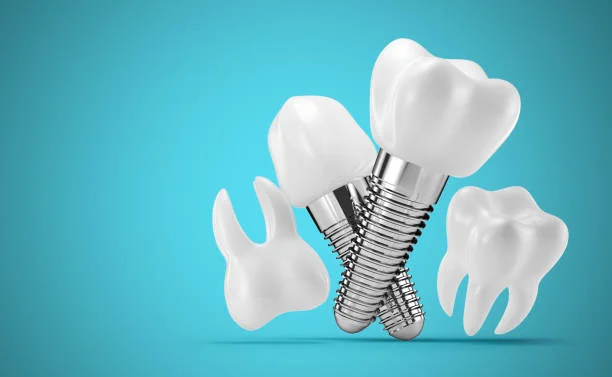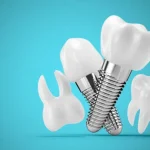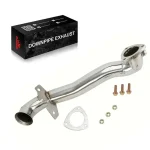The field of restorative dentistry has undergone a remarkable transformation over the past three decades. What was once a discipline reliant on bridges and removable dentures has evolved into one that places dental implants at the very centre of oral rehabilitation. The modern dental implant is no longer a luxury—it has become the gold standard for replacing missing teeth and restoring both functionality and confidence.
A Brief History of Implantology
While the concept of implanting artificial roots dates back thousands of years, the modern era of implantology began in the 1950s when Professor Per-Ingvar Brånemark discovered osseointegration—the biological process through which bone tissue fuses with titanium. This discovery fundamentally changed dentistry. Titanium’s exceptional biocompatibility and mechanical strength made it the ideal material for stable, long-term tooth replacement.
Since then, the design, surface treatment, and surgical techniques surrounding implants have advanced to a level that ensures predictable outcomes and high patient satisfaction. Digital planning, guided surgery, and CAD/CAM prosthetics have all contributed to the precision and efficiency of implant-based restorations.
Follow the trail — uncover related insights waiting for you.
Why Dental Implants Have Become the Standard
Unlike traditional bridges, which require the preparation of adjacent teeth, implants preserve natural tooth structure and stimulate the jawbone, preventing resorption. The benefits extend far beyond aesthetics:
- Biological stability: Implants integrate with bone, providing a fixed and durable base for prosthetic crowns or bridges.
- Functional restoration: Patients regain chewing efficiency close to that of natural teeth.
- Aesthetic excellence: Modern implant crowns replicate the translucency and contour of natural enamel.
- Longevity: With proper maintenance, implants can last decades, often outliving conventional restorations.
- Patient comfort: The feeling of stability and natural function greatly enhances quality of life.
As a result, implantology has become a key discipline not only in prosthodontics but also in periodontics, oral surgery, and general practice.
The Science Behind Successful Integration
Successful osseointegration depends on several biological and mechanical factors. The implant’s surface texture plays a major role in accelerating the healing process by increasing bone-to-implant contact. Sand-blasted, large-grit, acid-etched (SLA) surfaces have proven particularly effective in promoting rapid bone formation and long-term stability.
Equally important is the implant geometry. Thread design, taper, and platform switching help distribute occlusal loads evenly, minimising stress on the surrounding bone. Advances in connection systems—such as internal hex, conical, and Morse-taper connections—further enhance the mechanical integrity of the restoration.
Digital Transformation in Implant Dentistry
The integration of digital tools has revolutionised every stage of implant treatment. Three-dimensional imaging, intraoral scanning, and computer-aided design enable clinicians to plan surgeries with millimetre-level precision. Guided implant placement minimises surgical trauma, shortens chair time, and improves predictability.
Digital workflows also streamline communication between the clinic and the dental laboratory. Custom abutments, crowns, and surgical guides can be designed virtually and produced with additive manufacturing or milling systems. This not only reduces turnaround times but ensures that each restoration is perfectly tailored to the patient’s anatomy.
Material Innovations: From Titanium to Hybrid Options
Titanium remains the most widely used material for dental implants, thanks to its strength and proven biocompatibility. However, alternative materials such as zirconia have gained attention for their aesthetic properties and hypoallergenic potential. Hybrid designs—combining titanium cores with ceramic coatings—offer the best of both worlds, uniting structural resilience with natural translucency.
At Edison Medical™, the emphasis on material excellence is evident. Their implants are manufactured from Ti-6Al-4V-ELI titanium alloy—renowned for its purity and resistance to corrosion. Each implant undergoes precise SLA surface treatment, ensuring optimal osseointegration and long-term reliability across a wide range of clinical situations.
Implant Systems and Connection Diversity
One of the major challenges in modern implantology is compatibility. Clinicians often work with multiple implant brands, each using unique connection geometries. Edison Medical’s across-brand philosophy addresses this problem by offering implants and abutments engineered to integrate with over 200 leading systems. This cross-compatibility allows laboratories and clinics to streamline inventories without compromising precision or performance.
Multi-unit abutments, angulated connectors, and screw-retained solutions have expanded the scope of implant-supported restorations, from single-tooth replacements to full-arch rehabilitations. The ability to correct implant divergence and support passive fit in complex cases has become central to modern implant practice.
Sustainability and Workflow Efficiency
Today’s dental professionals face increasing pressure to deliver high-quality care efficiently and sustainably. Implant systems designed for ergonomic handling and reduced chair time are key to achieving these goals. Pre-mounted, mount-less designs eliminate unnecessary components and simplify surgical protocols.
Furthermore, consistent packaging and standardised torque values reduce procedural variability, enhancing safety and reproducibility. As more practices adopt fully digital workflows, supply chain efficiency and the reliability of implant components have become equally important as clinical excellence.
Challenges and Future Directions
Despite impressive advances, implantology continues to evolve. Researchers are exploring bioactive surfaces that actively stimulate bone growth, as well as antimicrobial coatings to prevent peri-implantitis. Regenerative materials, stem-cell therapy, and smart sensors embedded within implants represent the next frontier. These innovations promise even greater integration between biological and digital systems, blurring the line between prosthesis and living tissue.
Equally, education and training remain vital. The increasing sophistication of implant systems requires clinicians to stay abreast of emerging technologies and evidence-based techniques. Collaboration between manufacturers, universities, and dental professionals will continue to shape the direction of this dynamic field.
Conclusion
Dental implants represent far more than a mechanical replacement for missing teeth—they embody the convergence of biology, engineering, and artistry. Their success depends on precision manufacturing, advanced materials, and clinician expertise. As innovations in digital dentistry and biomaterials continue to expand possibilities, the role of implants in restorative care will only grow stronger.
For professionals seeking dependable, cross-compatible implant solutions that combine quality, versatility, and scientific integrity, Edison Medical™ stands as a trusted partner in the ongoing evolution of implant dentistry.
Feed your mind — explore more insights at 2A Magazine that enrich and inform you.







